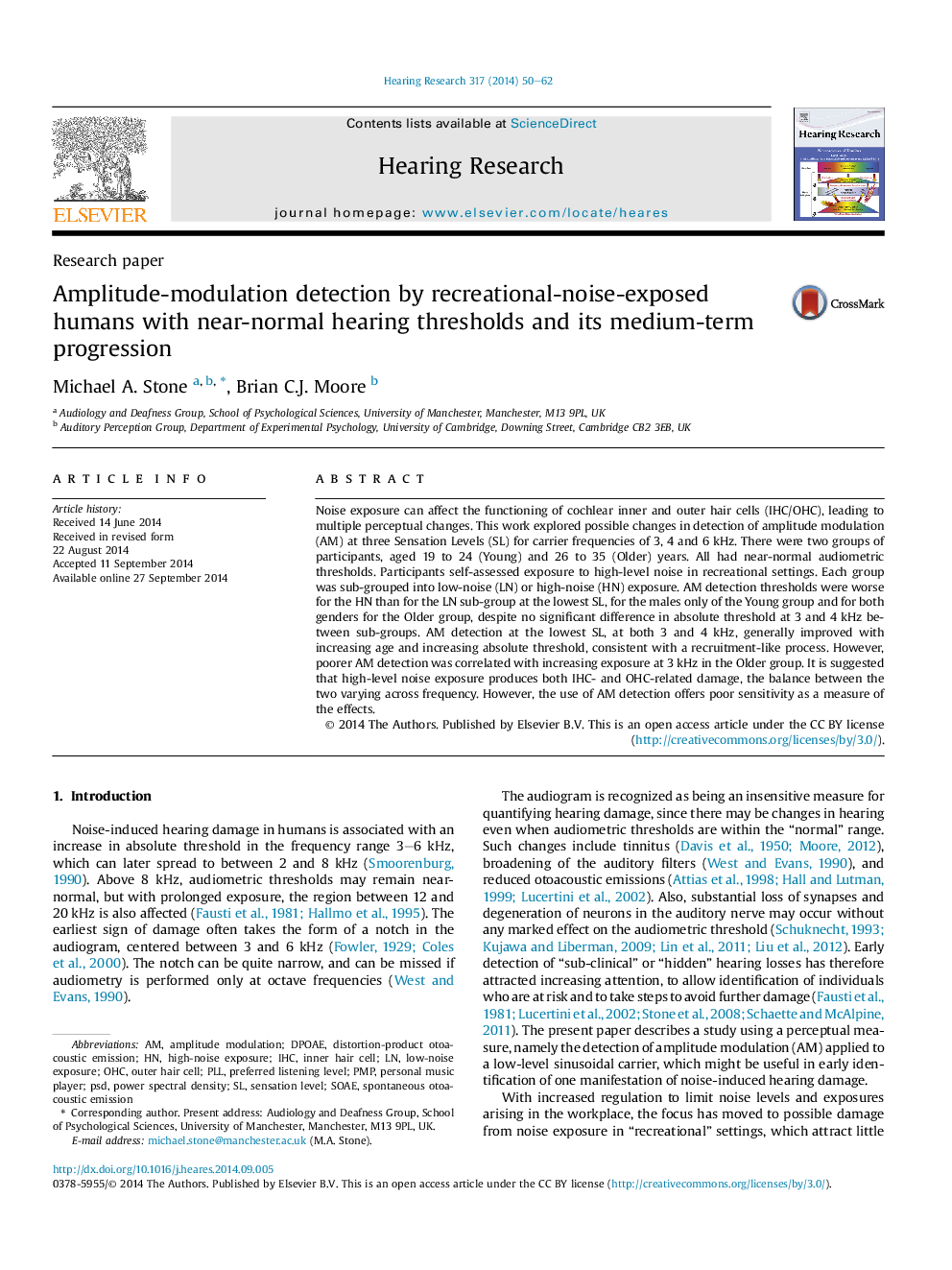| Article ID | Journal | Published Year | Pages | File Type |
|---|---|---|---|---|
| 6287380 | Hearing Research | 2014 | 13 Pages |
Abstract
Noise exposure can affect the functioning of cochlear inner and outer hair cells (IHC/OHC), leading to multiple perceptual changes. This work explored possible changes in detection of amplitude modulation (AM) at three Sensation Levels (SL) for carrier frequencies of 3, 4 and 6Â kHz. There were two groups of participants, aged 19 to 24 (Young) and 26 to 35 (Older) years. All had near-normal audiometric thresholds. Participants self-assessed exposure to high-level noise in recreational settings. Each group was sub-grouped into low-noise (LN) or high-noise (HN) exposure. AM detection thresholds were worse for the HN than for the LN sub-group at the lowest SL, for the males only of the Young group and for both genders for the Older group, despite no significant difference in absolute threshold at 3 and 4Â kHz between sub-groups. AM detection at the lowest SL, at both 3 and 4Â kHz, generally improved with increasing age and increasing absolute threshold, consistent with a recruitment-like process. However, poorer AM detection was correlated with increasing exposure at 3Â kHz in the Older group. It is suggested that high-level noise exposure produces both IHC- and OHC-related damage, the balance between the two varying across frequency. However, the use of AM detection offers poor sensitivity as a measure of the effects.
Keywords
Related Topics
Life Sciences
Neuroscience
Sensory Systems
Authors
Michael A. Stone, Brian C.J. Moore,
